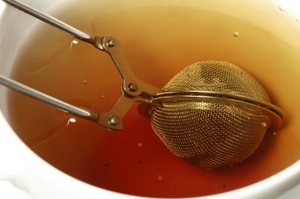When choosing a knee brace, there are several factors to take into consideration, the first being what type of injury you have. This is important as the right brace makes all the difference in a bad injury. Here is a breakdown of different braces and what they might be used for. Be sure to seek a doctor’s advice before buying a new knee brace to ensure you’re buying a knee brace that is right for your injury.
Hinged braces
Hinged braces are considered more heavy duty and usually provide more support and stability than neoprene or elastic braces. Hinged braces facilitate movement and are mostly used for people with lateral or medial instability of the knee (medial refers to the inner side of the knee joint; lateral refers to the outside of the knee joint), and people with ACL (anterior cruciate ligament) injuries.
The ACL is one of the main stabilizing ligaments in the knee. Resulting from hyperextension of the knee or a blow, injury to the ACL can be partial or complete. In addition to ACL, hinged knee braces also help with PCL (posterior cruciate ligament) injuries, another major ligament of the knee that works with the ACL and is very important to the function of the knee.
Neoprene Braces
Neoprene is widely used in many products, and is known for its high insulation and heat retention properties. Neoprene knee braces are great because they stretch in all four directions, maintain their shape, and don’t bunch up at the knee.
A durable material, neoprene lasts a long time and is great for cold weather conditions; many people use this brace in colder conditions for activities like snowboarding, ice skating, and even runs and walks to keep their knee warm and keep the blood circulating.
Pediatric Knee Braces
Pediatric knee braces are those that are used specifically for youth. They generally allow a wide range of flexibility, and thus are an excellent choice for use with injuries of growing joints and ligaments in children and youth.
Elastic Braces
Elastic braces are generally made of stretchable, breathable fibers that provide maximum comfort for the wearer. They are widely used for support of the knee joint, even if no injury has occurred. They are best for light, non-serious injuries and are great for non-injured support of the knee as well.
Knee Bands
Knee bands are used to relieve knee stress resulting from a number of knee conditions, including Osgood Schlatters disease and Patella Tendonitis (runners or jumper’s knee), and a number of other knee conditions. Knee bands can also be used to support and improve circulation in the knee, even if you aren’t injured.
Professional Knee Braces
Professional Knee braces are used in severe cases of knee injury where the patient has received surgery or has been immobilized for a long period of time. The professional knee braces are constructed of metal, usually aluminum, and provide maximum stability and support for the knee. They are longer, stronger, and offer the most support of all the braces.
Arthritis Braces
Arthritis braces serve to relieve the pain and stress of arthritic knee joints. The pain and restricted motion from an arthritic knee is somewhat balanced by an arthritic knee brace because it changes the angle of your knee joint with special hinges, reducing the pressure on the joint.
Post-Operative Knee Braces
Post-Operative knee braces are used after an injury or a surgery. They provide limited motion in the initial healing stages, and progressively allow for a fuller ranger of motion. Post- Operative Knee Braces are usually adjustable, and most have hinges to control the directions you can move your leg and the length you can extend it out.
Reference:
- Knee Braces Online



